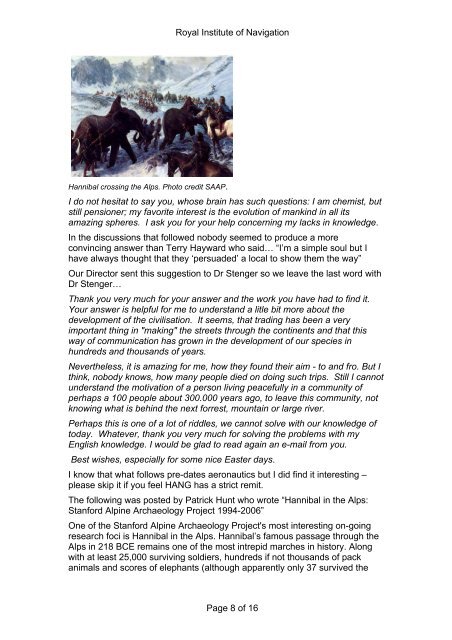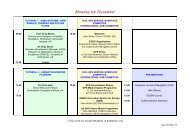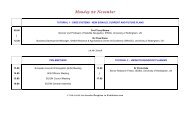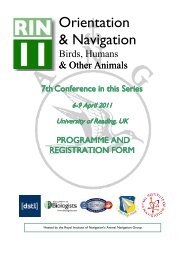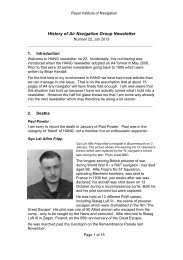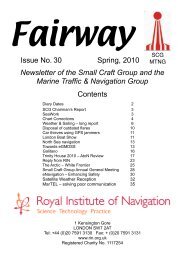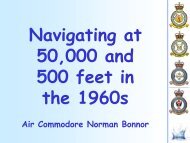HANG Newsletter - Royal Institute of Navigation
HANG Newsletter - Royal Institute of Navigation
HANG Newsletter - Royal Institute of Navigation
You also want an ePaper? Increase the reach of your titles
YUMPU automatically turns print PDFs into web optimized ePapers that Google loves.
<strong>Royal</strong> <strong>Institute</strong> <strong>of</strong> <strong>Navigation</strong><br />
Hannibal crossing the Alps. Photo credit SAAP.<br />
I do not hesitat to say you, whose brain has such questions: I am chemist, but<br />
still pensioner; my favorite interest is the evolution <strong>of</strong> mankind in all its<br />
amazing spheres. I ask you for your help concerning my lacks in knowledge.<br />
In the discussions that followed nobody seemed to produce a more<br />
convincing answer than Terry Hayward who said… “I’m a simple soul but I<br />
have always thought that they ‘persuaded’ a local to show them the way”<br />
Our Director sent this suggestion to Dr Stenger so we leave the last word with<br />
Dr Stenger…<br />
Thank you very much for your answer and the work you have had to find it.<br />
Your answer is helpful for me to understand a litle bit more about the<br />
development <strong>of</strong> the civilisation. It seems, that trading has been a very<br />
important thing in "making" the streets through the continents and that this<br />
way <strong>of</strong> communication has grown in the development <strong>of</strong> our species in<br />
hundreds and thousands <strong>of</strong> years.<br />
Nevertheless, it is amazing for me, how they found their aim - to and fro. But I<br />
think, nobody knows, how many people died on doing such trips. Still I cannot<br />
understand the motivation <strong>of</strong> a person living peacefully in a community <strong>of</strong><br />
perhaps a 100 people about 300.000 years ago, to leave this community, not<br />
knowing what is behind the next forrest, mountain or large river.<br />
Perhaps this is one <strong>of</strong> a lot <strong>of</strong> riddles, we cannot solve with our knowledge <strong>of</strong><br />
today. Whatever, thank you very much for solving the problems with my<br />
English knowledge. I would be glad to read again an e-mail from you.<br />
Best wishes, especially for some nice Easter days.<br />
I know that what follows pre-dates aeronautics but I did find it interesting –<br />
please skip it if you feel <strong>HANG</strong> has a strict remit.<br />
The following was posted by Patrick Hunt who wrote “Hannibal in the Alps:<br />
Stanford Alpine Archaeology Project 1994-2006”<br />
One <strong>of</strong> the Stanford Alpine Archaeology Project's most interesting on-going<br />
research foci is Hannibal in the Alps. Hannibal’s famous passage through the<br />
Alps in 218 BCE remains one <strong>of</strong> the most intrepid marches in history. Along<br />
with at least 25,000 surviving soldiers, hundreds if not thousands <strong>of</strong> pack<br />
animals and scores <strong>of</strong> elephants (although apparently only 37 survived the<br />
Page 8 <strong>of</strong> 16


